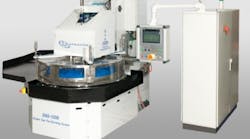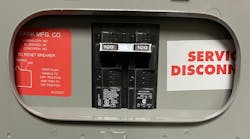Lapmaster Precision Finishing Services Inc. has been cited for 11 safety and health violations by the U.S. Department of Labor's Occupational Safety and Health Administration following a complaint inspection. The inspection found five repeat violations, including failing to provide personal protective equipment and training for workers. OSHA has proposed fines of $103,800.
"Companies, such as Lapmaster Precision Finishing Services, who are cited for repeat violations, demonstrate a lack of regard for employee safety and health," said Bill Wilkerson, OSHA's area director in Cincinnati. "Employers are responsible for identifying hazards that exist in their workplace and training workers to follow proper procedures to prevent injuries and illnesses."
Five repeat violations involved a lack of training on electrical safety, hazard communications and powered industrial vehicles, failing to ensure workers used personal protective equipment for energized electrical work, and failing to label coolant bottles. A repeat violation exists when an employer previously has been cited for the same or a similar violation of a standard, regulation, rule or order at any other facility in federal enforcement states within the last five years. Lapmaster Precision Finishing Services was cited for similar violations at the Dayton facility in 2012.
Six serious violations involve a lack of machine guarding; use of exposed fan blades; a lack of written safety procedures for electrical work; use of receptacles that were not suitable for a wet environment; and uncovered floor holes. The company also lacked specific energy control procedures for machines and equipment, and failed to train employees in lockout/tagout procedures to control hazardous energy. A serious violation occurs when there is substantial probability that death or serious physical harm could result from a hazard about which the employer knew or should have known.
To view the current citations, visit : http://www.osha.gov/ooc/citations/Lapmaster_923289_0123_14.pdf*
Lapmaster Precision Finishing Services is a part of Lapmaster International LLC in Mount Prospect, Ill. The Dayton facility, which processes cast iron, steel and several metal alloys, as well as plastics, Teflon, ceramics and composite materials to finish tolerances for automotive and other manufacturing applications, employs approximately 48 workers.
The company has 15 business days from receipt of its citations and penalties to comply, request an informal conference with OSHA's area director, or contest the findings before the independent Occupational Safety and Health Review Commission. If a company does not file or contest within that period, it must abate the cited conditions within the period ordered in the citations and pay the proposed penalties.



